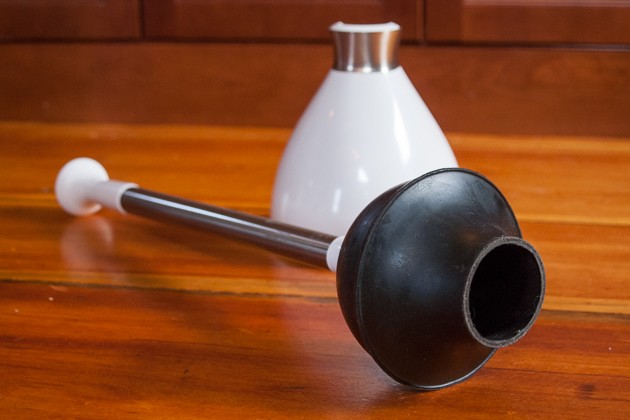How to Properly Use Your Plunger

Nearly every household has a plunger, and believe us when we say that if a clog occurs in the bathroom it’s essential to have one on hand. No homeowner wants to be left without a plunger, but have you ever wondered if you’re using your plunger right? Today we are going to show you the correct way to use your plunger!
What Is a Plunger?
You’ve probably seen a plunger tucked away behind a toilet tank or inside your grandma’s bathroom closet. A plunger has a long handle with a large rubber cup at the end. When used correctly, a plunger can unclog pipes and have them run more efficiently. There’s no clear answer as to who invented the plunger. Many say that the plunger got its first use around the late 1700s or early 1800s.
While the design of a plunger is relatively simple, it is a powerful tool. When the plunger is pressed down, over a clog, it forces air into the drain and increases pressure. When the clog is moved, the air will continue to move through the pipes. Pulling back up on the plunger creates a vacuum and forces anything in the pipe upwards and out.
How to Use Your Plunger:
Most people reach for the plunger when the toilet becomes clogged and isn’t flushing correctly. You can use a plunger on other clogs throughout the house, such as in sinks, and many times a plunger will fix the issue and save you a call to your plumber.
But when is the proper time to grab the plunger? Well, whenever there is evidence of a clog, it’s a good idea to try a plunger first before calling a plumbing company. While it may not fix every plumbing issue, it’s an easy and convenient first step to take before you call a pro.
Toilets:
When your toilet looks like to overflowing, wait about ten minutes. After waiting at least ten minutes, turn off the water supply hose on your toilet (More than likely silver knob connected to the wall). If the water in the toilet is still close to overflowing, remove some of the water. If the water level is too low, add more water to fill the toilet bowl approximately halfway; having the right amount of water can make plunging more effective. As you put your plunger in the water, the cup should be covered with water, and the rubber ring of the flange should be inserted into the drain opening in the bowl. Put even pressure, pushing and pulling for about 20 seconds. Avoid breaking the “seal” with the drain and keep the plunger in the water.
Sinks and Tubs:
It’s easy to use a plunger on a bathtub, sink, or shower. If you unclog a sink drain, tub, or shower, make sure to cover the overflow drain if one is present (top hole on the bathtub or sink). Covering the overflow drain helps create a stronger suction. Place the cup of the plunger over the drain and using firm pressure, push and pull the plunger. Similar to plunging a toilet, plunge the drain for about 20 seconds. If you continue to have a slow drain, try plunging more and use extra force.
So next time you have a clog don’t use those pesky chemicals that destroy your piping!
Try using your plunger first. If that doesn’t work call Armstrong Plumbing!
916-641-0886
